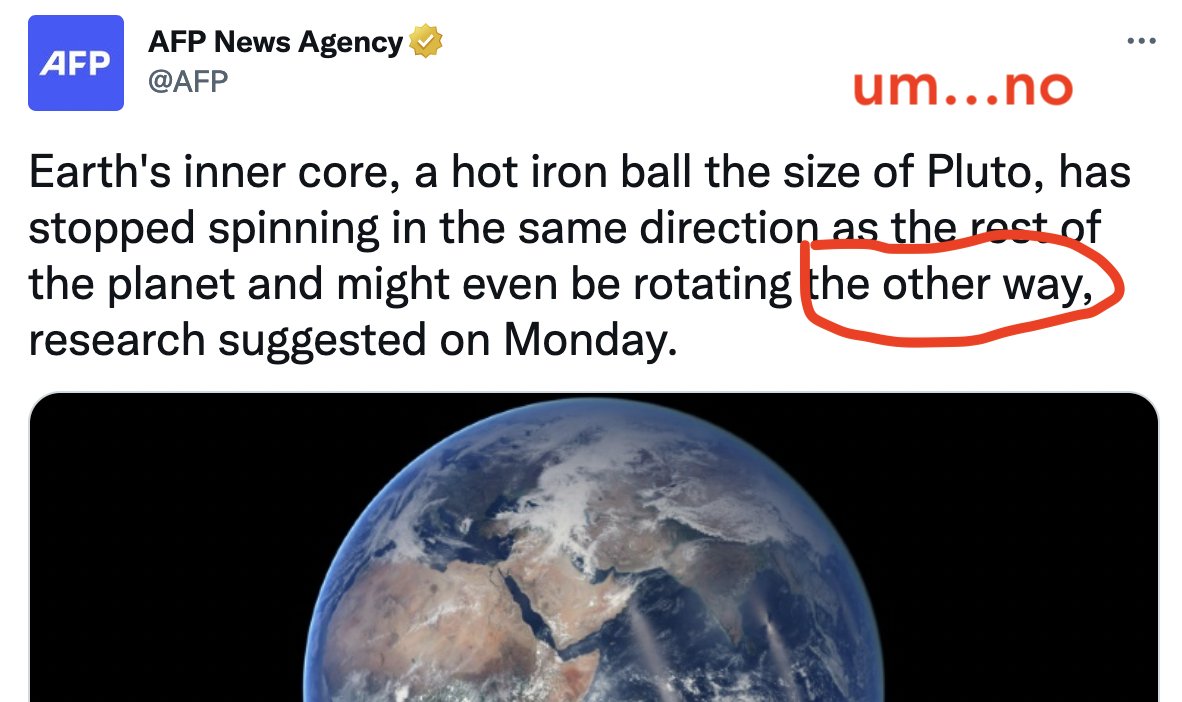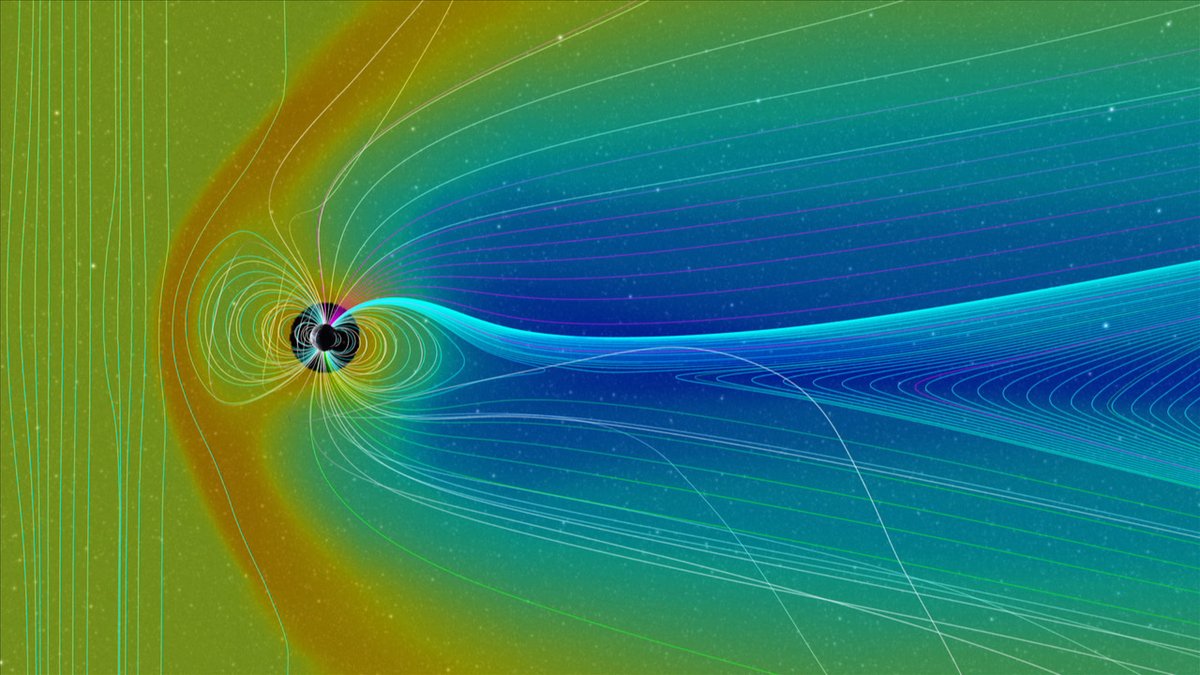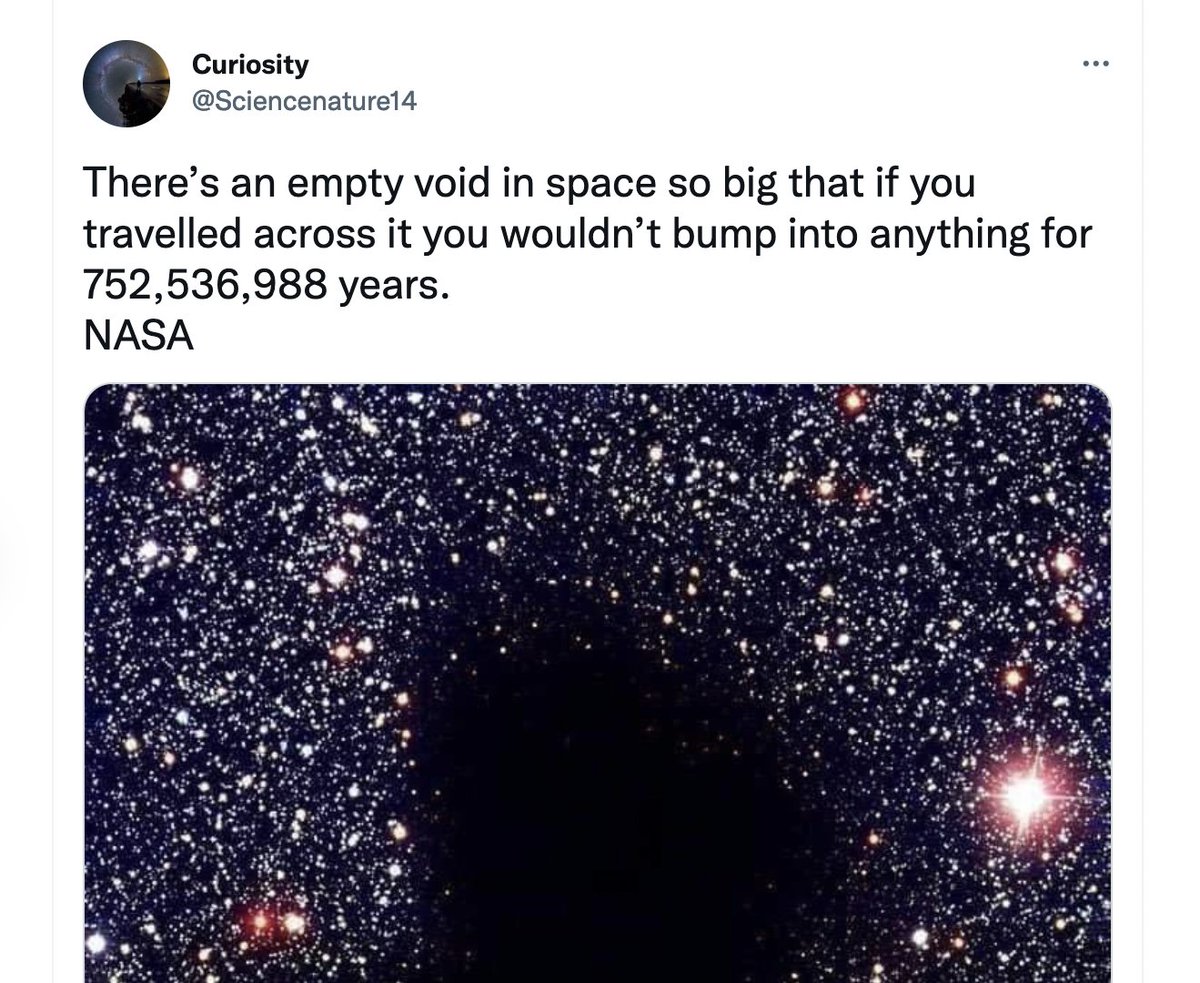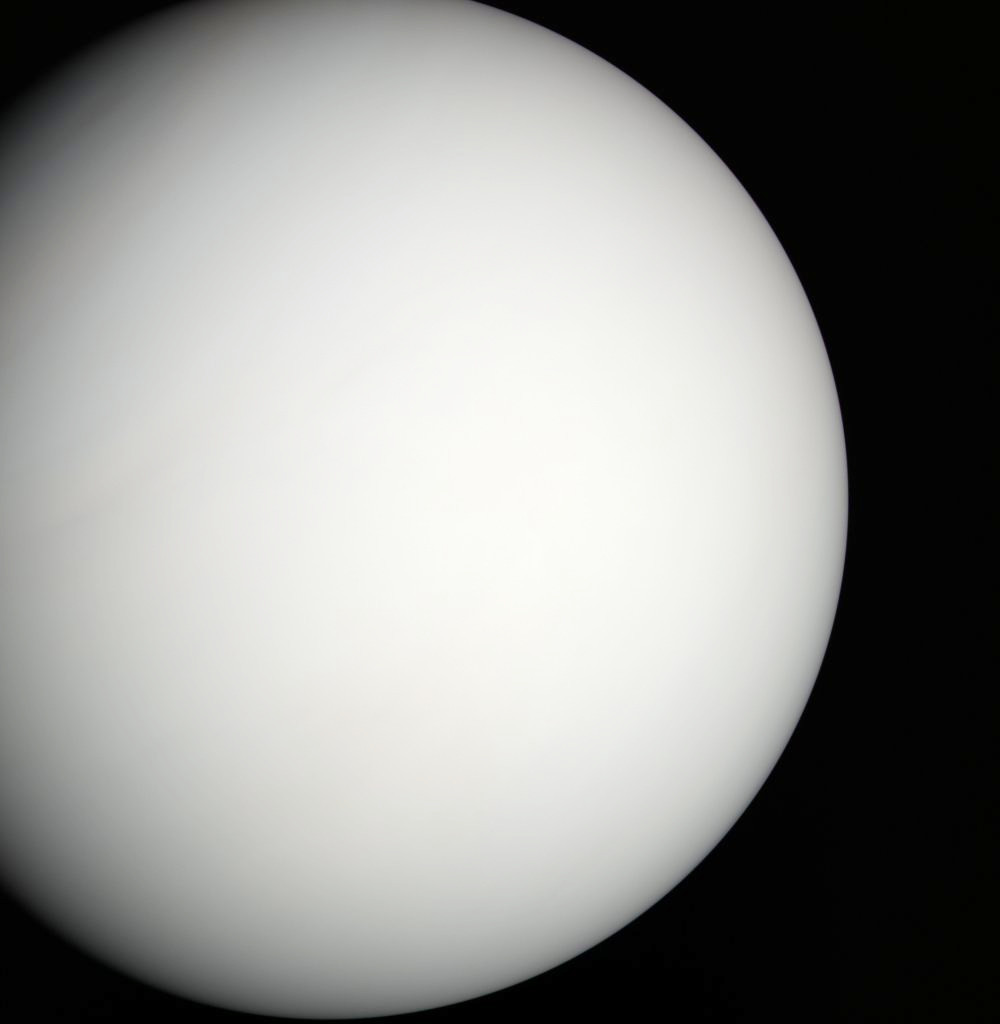If you saw this headline, or one like it, you might reasonably have thought the world has gone mad. The inside of the Earth is spinning backwards?
*But that is not at all what the actual research says.*
[a short thread] #RealityCheck
*But that is not at all what the actual research says.*
[a short thread] #RealityCheck

Key point: Earth's core rotates at almost exactly the same rate as the rest of the planet. Did in the past, still does so now. It rotates at the same speed to within 0.001%!
But even the research paper is confusing on that point: #RealityCheck
nature.com/articles/s4156…
But even the research paper is confusing on that point: #RealityCheck
nature.com/articles/s4156…

What's interesting here is that Earth's inner core rotates *almost* the same as the surface, but not *exactly* the same. It may rotate a tiny bit faster or slower -- and that's not apocalyptic, but it sure is interesting.
sciencenews.org/article/earth-… #Earth #Core
sciencenews.org/article/earth-… #Earth #Core

The first hint that Earth's core goes its own way came in 1996. The core appeared to be turning 1 part in 100,000 faster than the surface. That small difference would case it to drift by 10s of kilometers a year -- a big effect by geophysical standards.
nature.com/articles/38222…
nature.com/articles/38222…

Earth's inner core is solid, but the outer core is liquid. That means the inner core is suspended in liquid, like the insides of a chocolate-covered cherry, leaving it weirdly free to move around. #Core #BeFree 



Why would Earth's core spin (slightly!) faster or slower than the surface? 1) the gravity of the mantle is pulling on it. 2) magnetic fields from the outer core grab onto it. If we can measure these effects, we learn a lot about the geomagnetic field that keeps us all safe. #Core 

Bottom line: Earth's core cannot just stop rotating and reverse itself! We're talking *tiny* variations, with the rotation period of the core running less than one second faster or slower than it is up top. Enough to be fascinating, but not enough to do this: #TheCore [fin] 

• • •
Missing some Tweet in this thread? You can try to
force a refresh
























